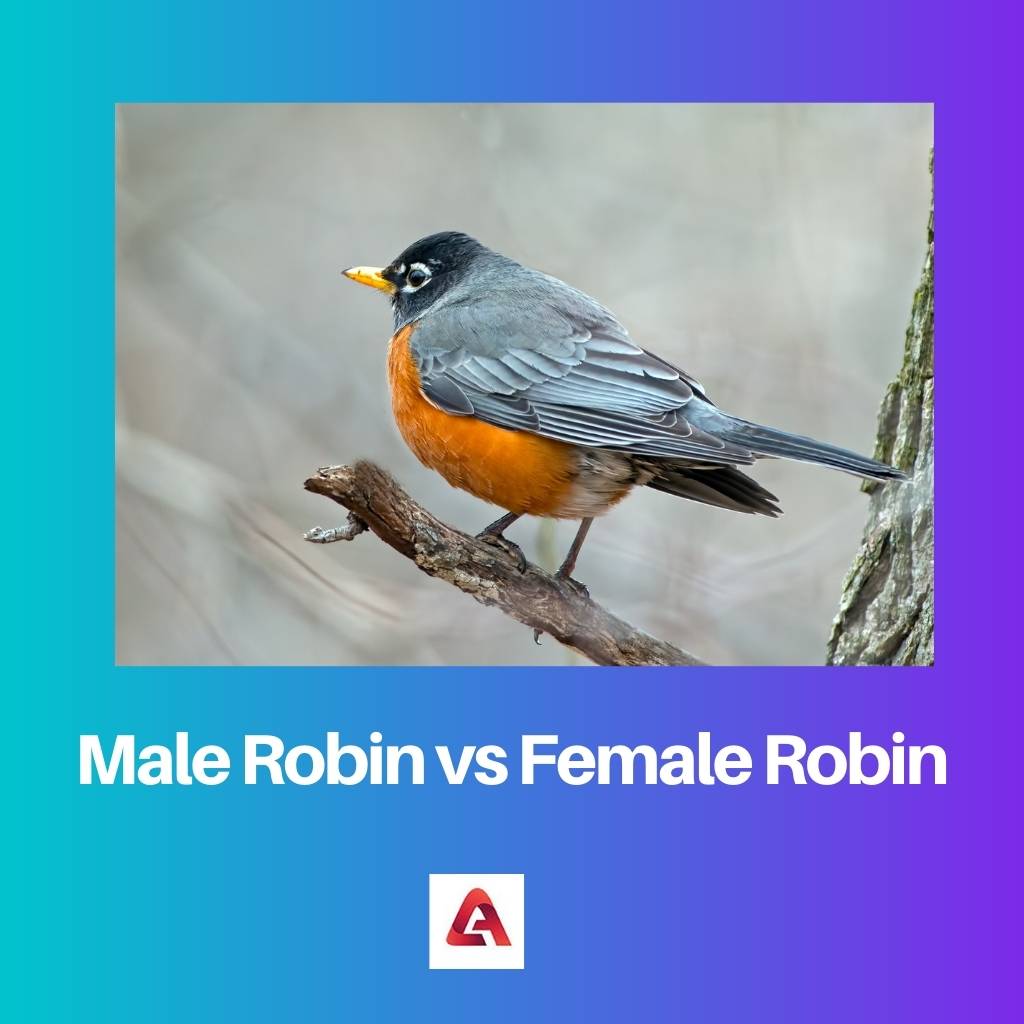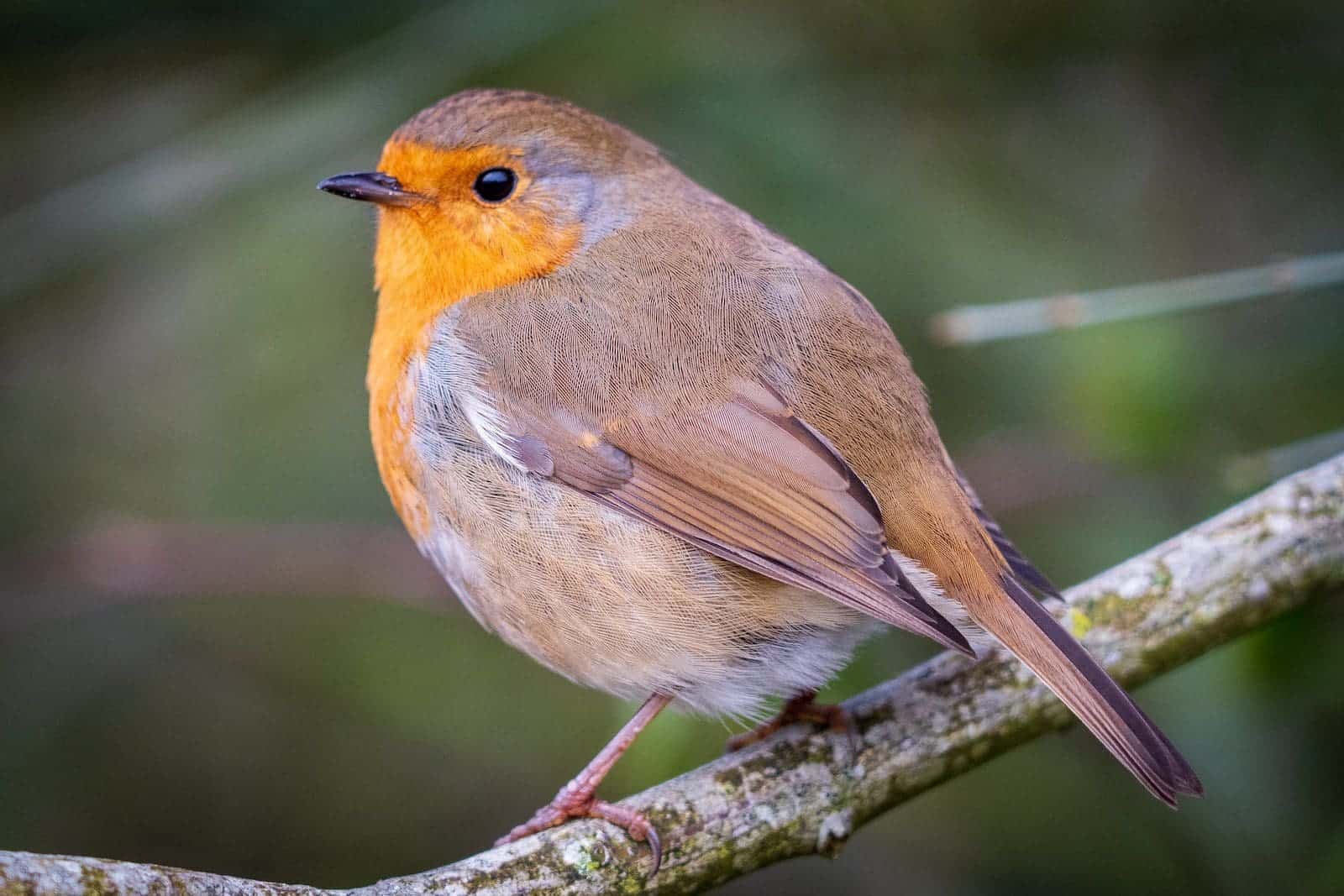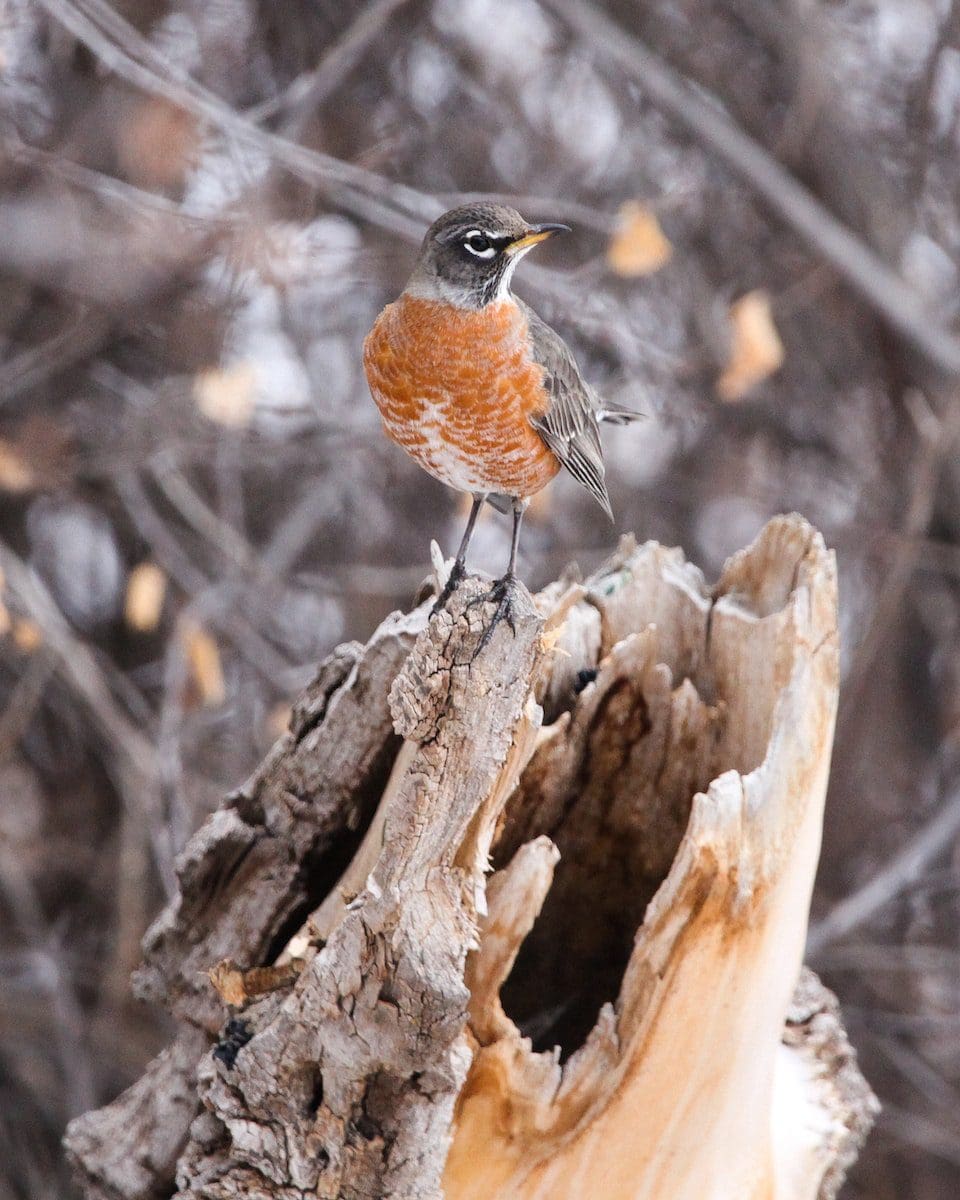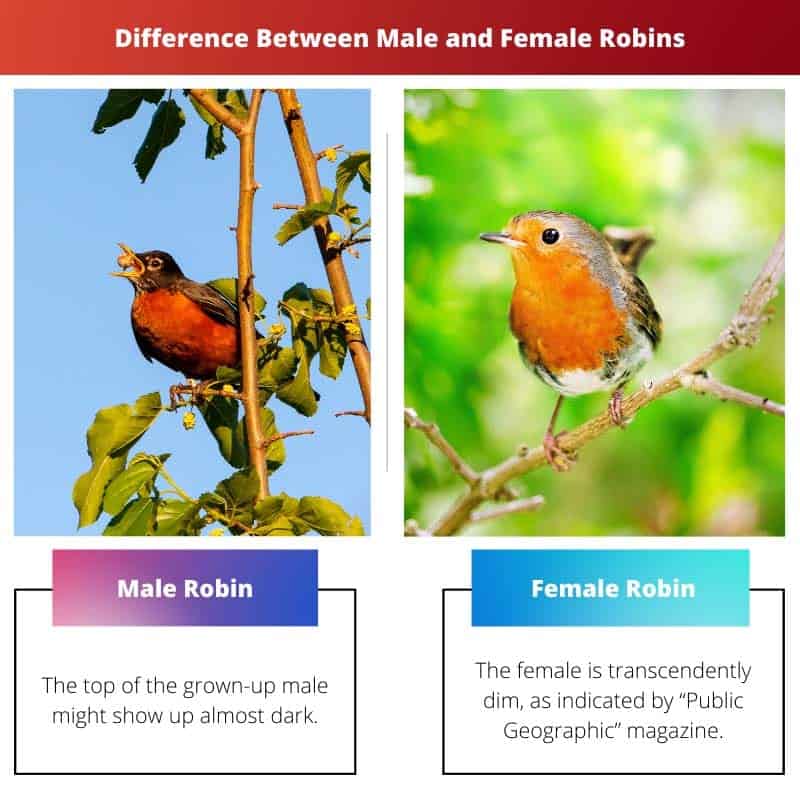With an inescapable living space range and an inclination for rural living, American robins are individuals from the thrush family and are ordinarily found in many spaces of the US consistently.
Guys and females look very similar to each other, in contrast to numerous other avian species. If all else fails, noticing Robin’s conduct can assist with recognizing their sexual orientation.
Key Takeaways
- Male robins have a brighter red breasts, while female robins display a more muted orange-red coloration.
- Male robins sing more frequently and loudly than females to establish territory and attract mates.
- Female robins are responsible for building the nest and incubating the eggs, while males help to feed the hatchlings.
Male Robin vs Female Robin
Male robins are larger than females and have brighter plumage with a deeper red-orange breast. They also have a darker head and back compared to the females. Female robins are slightly smaller and have duller plumage than males, with a paler, more washed-out breast. They have a grey-brown head and back and the feathers on their belly.

The male robin is more splendid in shading than the female. His eye-ring, splendid bill tone, acne, and white throat markings all show this bird is a male.
The female’s plume’s watch is cleaned out and blurred, contrasted with the hazier, more extravagant shades of the male.
The female robin should be very much covered altogether and be protected from hunters as she broods her eggs.
This is the reason females of many bird species are not as splendid in shading as the guys.
Comparison Table
| Parameters of Comparison | Male Robin | Female Robin |
|---|---|---|
| Particular Plumage | The top of the grown-up male might show up almost dark. | The female is transcendently dim, as indicated by “Public Geographic” magazine. |
| Breeding Behaviour | The male will incidentally be noticed carrying food to her. The male is answerable for assisting with taking care of the little birds when brought forth. | The female works with an assortment of twigs and mud however may utilize string, material, or paper in the event that she can discover them. The female hatches her eggs once they show up in the spring. |
| Helping Hatching | The male follows the youthful birds and may lead them to a mutual perch site. | The female starts another home in anticipation of another brood. |
| Traveling | Male robins, conversely, stay on a similar domain all year. | Female robins will move to a neighboring settling area throughout the late spring. |
| Brightness | It is brighter in color than the female robin. | It is less bright in color than the male robin. |
What is Male Robin?
The American robins are transitory melody birds that have a place with the thrush family, Turdidae. They have a ruddy orange chest with white streaks. Some of the time, the male bosom region has significant dim spots.
The ruddy orange tone is exceptionally splendid and differentiating. Their head is practically dark, and the eye bow is white. Their upper or dorsal quills are greyish, and the gut and under tail are white.
The snout is yellow, and the guys have a little dim spot at the tip. They are dynamic in the daytime, and guys have exceptionally sharp and complex voices, making them very mainstream for their singing.
A grown-up male is around 28 centimetres in length and weighs around 80 grams. They mate between pre-summer and midsummer, and the male doesn’t contribute to the structure of the home.
In any case, guys assume the liability to shield the home from hunters by forceful whistles, which are exceptionally sharp and touchy speech-each-each-each calls to undermine the adversaries.

What is Female Robin?
Female robins are small, with a body length of around 23 centimetres, and their body weight is around 70 grams. As in numerous birds, female robins are less appealing, and the tones are less splendid.
They have an earthy colour on the head and less brilliant underparts. The tip of the female’s mouth has an apparent dark spot.
Female buckles down in building the home for rearing and doesn’t get any assistance from others.
Every year, another home is worked for rearing purposes. She lays three to five light blue shading eggs and broods them in isolation for 14 days. In any case, the female’s commitment is more to taking care of the chicks also.

Main Differences Between Male Robin and Female Robin
- The top of the grown-up male might show up almost dark, while the female is transcendently dim, as indicated by “Public Geographic” magazine.
- The female works with an assortment of twigs and mud; however, she may utilize string, material, or paper in the event that she can discover them. The female hatches her eggs once they show up in the spring, while the male will incidentally be noticed carrying food to her. The male is answerable for assisting with taking care of the little birds when brought forth.
- The female starts another home in anticipation of another brood, while the male follows the youthful birds and may lead them to a mutual perch site.
- Female robins will move to a neighbouring settling area throughout the late spring while Male robins, conversely, stay on a similar domain all year.
- A female robin is less bright than a male robin.

- https://journals.lww.com/jcat/fulltext/2004/03000/accentuated_virchow_robin_spaces_in_the_centrum.17.aspx
- https://academic.oup.com/gigascience/article-abstract/8/9/giz111/5559526

The detailed description of male and female robins’ breeding behaviors and their distinct physical characteristics is truly enlightening. The information contributes to a better understanding of these birds’ behaviors.
Absolutely, Cking. The comprehensive overview of male and female robins’ behaviors and plumage features enhances our knowledge about their distinct roles during breeding.
The details about male robins’ territorial defense and the distinct coloration differences between male and female robins provide a deeper insight into their behaviors and roles in breeding.
Absolutely, Karl Harrison. The facts presented here highlight the significant biological differences in male and female robins’ roles during breeding and nesting.
I completely agree, Karl Harrison. The knowledge about the females’ primary role in incubating the eggs and taking care of the young is quite enlightening.
I wasn’t aware that American robins are migratory songbirds belonging to the thrush family. The details about the color differences and characteristics between male and female robins are fascinating!
I agree, Ujackson. It’s interesting to learn about their breeding behavior as well. Female robins work alone in building the nest and taking care of the chicks.
The information about male and female robins’ roles in nesting and breeding is quite insightful. The detailed accounts of their behavior and contrasting plumage help in understanding their roles in the ecosystem.
I completely agree, Elliot76. The detailed descriptions of male and female robins’ breeding behaviors and plumage characteristics provide valuable insights into their ecological significance.
Absolutely, Elliot76. The comprehensive details about male and female robins’ nesting and behavior patterns contribute significantly to our understanding of avian ecology.
The information provided about the distinctive plumage and breeding behavior of male and female robins is quite comprehensive. Their feeding habits and territorial calls are also noteworthy.
Absolutely, Jack Smith. I’m intrigued by the fact that male robins assist in feeding the hatchlings, despite their primary role being the defense of the nest.
The information provided about the male and female robins is comprehensive and insightful. The behavior differences and distinctive plumage characteristics have been detailed meticulously.
I agree, Henry98. The details about the male and female robins’ nesting and movement patterns provide a comprehensive understanding of their behavior and ecological roles.
The features and distinct characteristics of male and female robins have been described vividly, providing a comprehensive overview of the species and their behaviors.
It’s impressive to learn about the male robins’ vibrant coloration and their territorial behaviors. The detailed comparison between males and females’ physical attributes is quite informative.
Indeed, Pturner. The insights into the behavioral and plumage differences between male and female robins are essential in understanding their ecological roles.
The comparison table provided here helps in understanding the specific differences between male and female robins very clearly. It’s well organized and informative.
Indeed, Barry Jackson. The behavior patterns and physical characteristics of male and female robins are detailed impeccably, making it easier to distinguish between the two.
The information about male and female robins’ behavioral differences and the characteristics has been presented in a well-structured manner, imparting a deeper understanding of this avian species.
Absolutely, Brown Eva. The detailed information about male and female robins’ distinctive features and behaviors contributes to a profound understanding of their ecological roles.
Indeed, Brown Eva. The detailed account of male and female robins’ roles in breeding and nesting is insightful, providing a comprehensive understanding of their ecological contributions.